cybermad
Clan Leader
Si pincháis aquí se ve el video del jaudi 540-2 quemando goma  https://www.instagram.com/p/BYxf3tqHO3X/
https://www.instagram.com/p/BYxf3tqHO3X/
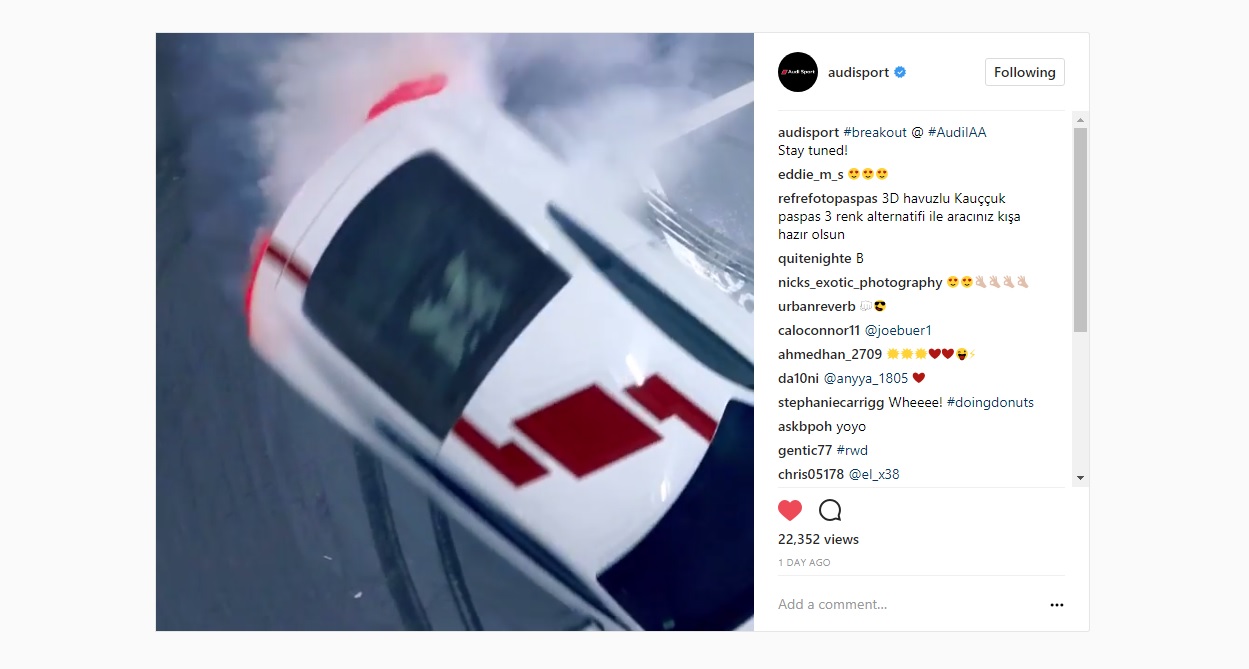
Por fin un R8 a propulsión, como el original

2018 Audi R8 V10 GT Confirmed With RWD, Smoky Donuts Are In Its Nature
Automobili Lamborghini has the Huracan, which is basically an Audi R8 V10 Plus with nicer styling and an exotic badge. Lamborghini has something else to brag about in the form of the Huracan LP580-2, which comes with rear-wheel-drive.
Not happy with this matter, Audi Sport took to Instagram to confirm the RWD R8 is finally happening. On the market since 2015, the second generation of the supercar will welcome the R8 V10 GT next week at the 2017 Frankfurt Motor Show. The video teaser shows off the vehicle’s tire-smoking capability rather well, along with the test driver’s talent at pulling off monster donuts.
Other than the car being rear-wheel-drive and painted white with red decals, the teaser doesn’t offer any other information on the long-rumored R8 V10 GT. What’s for certain, however, is that the naturally aspirated 5.2-liter won’t be as powerful as in the all-wheel-drive R8. Sending the goodies exclusively to the rear further means the R8 V10 GT will be slightly lighter than the R8 V10.
By how much? Well, let’s look at how the Huracan LP610-4 and Huracan LP580-2 stack up against each other. With a dry weight rated at 1,422 kilograms (3,135 pounds), the LP610-4 is clearly heavier than the 1.389-kilogram (3,062-pound) LP580-2. That’s a saving of 33 kg (73 lbs), which comes courtesy of losing the BorgWarner GenV coupling, among other bits.
It’s also worthy of mention that weight distribution is also affected by the change from AWD to RWD, with the Huracan LP580-2 sporting 40 percent at the front and 60 percent at the rear. This setup reduces inertia on the front axle compared to the Huracan LP610-4, translating to more exciting handling.
As for the oily bits, the 2018 Audi R8 V10 GT should offer 580 PS (572 hp) and 540 Nm (398 lb-ft) of torque at 6,500 rpm. Thanks to the fast-shifting seven-speed dual-clutch automatic transmission, zero to 100 km/h (62 mph) should take 3.4 seconds, and top speed should be 320 km/h (198 mph).
According to Audi, the R8 V10 GT is a “limited special model,” which sounds confusing bearing in mind Lamborghini didn’t cap production of the LP580-2.
https://www.autoevolution.com/news/...wd-smoky-donuts-are-in-its-nature-120306.html
 https://www.instagram.com/p/BYxf3tqHO3X/
https://www.instagram.com/p/BYxf3tqHO3X/
Por fin un R8 a propulsión, como el original


2018 Audi R8 V10 GT Confirmed With RWD, Smoky Donuts Are In Its Nature
Automobili Lamborghini has the Huracan, which is basically an Audi R8 V10 Plus with nicer styling and an exotic badge. Lamborghini has something else to brag about in the form of the Huracan LP580-2, which comes with rear-wheel-drive.
Not happy with this matter, Audi Sport took to Instagram to confirm the RWD R8 is finally happening. On the market since 2015, the second generation of the supercar will welcome the R8 V10 GT next week at the 2017 Frankfurt Motor Show. The video teaser shows off the vehicle’s tire-smoking capability rather well, along with the test driver’s talent at pulling off monster donuts.
Other than the car being rear-wheel-drive and painted white with red decals, the teaser doesn’t offer any other information on the long-rumored R8 V10 GT. What’s for certain, however, is that the naturally aspirated 5.2-liter won’t be as powerful as in the all-wheel-drive R8. Sending the goodies exclusively to the rear further means the R8 V10 GT will be slightly lighter than the R8 V10.
By how much? Well, let’s look at how the Huracan LP610-4 and Huracan LP580-2 stack up against each other. With a dry weight rated at 1,422 kilograms (3,135 pounds), the LP610-4 is clearly heavier than the 1.389-kilogram (3,062-pound) LP580-2. That’s a saving of 33 kg (73 lbs), which comes courtesy of losing the BorgWarner GenV coupling, among other bits.
It’s also worthy of mention that weight distribution is also affected by the change from AWD to RWD, with the Huracan LP580-2 sporting 40 percent at the front and 60 percent at the rear. This setup reduces inertia on the front axle compared to the Huracan LP610-4, translating to more exciting handling.
As for the oily bits, the 2018 Audi R8 V10 GT should offer 580 PS (572 hp) and 540 Nm (398 lb-ft) of torque at 6,500 rpm. Thanks to the fast-shifting seven-speed dual-clutch automatic transmission, zero to 100 km/h (62 mph) should take 3.4 seconds, and top speed should be 320 km/h (198 mph).
According to Audi, the R8 V10 GT is a “limited special model,” which sounds confusing bearing in mind Lamborghini didn’t cap production of the LP580-2.
https://www.autoevolution.com/news/...wd-smoky-donuts-are-in-its-nature-120306.html
Última edición:






























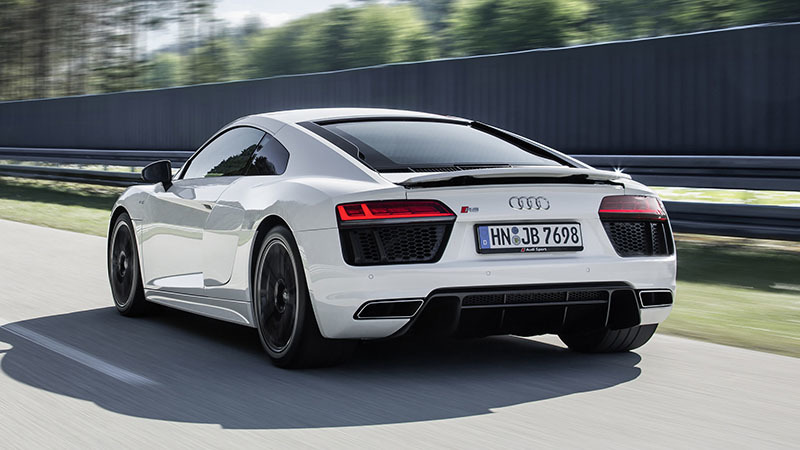
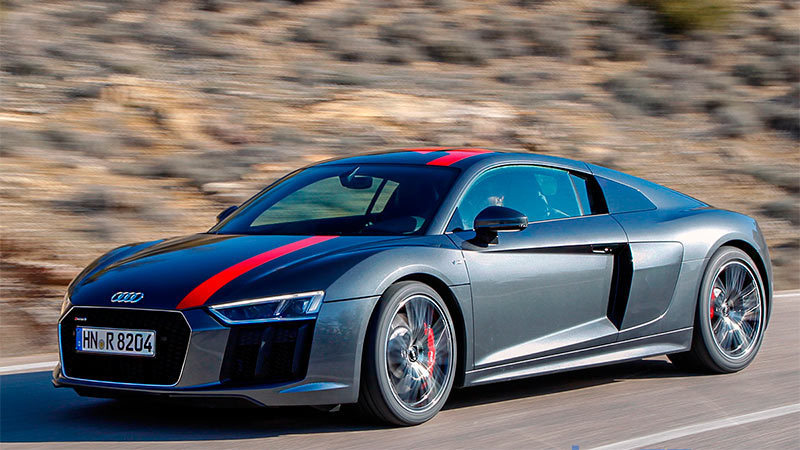

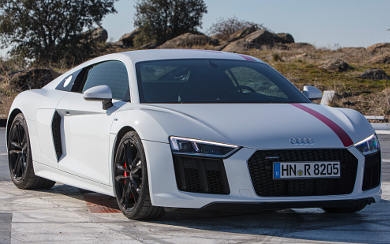
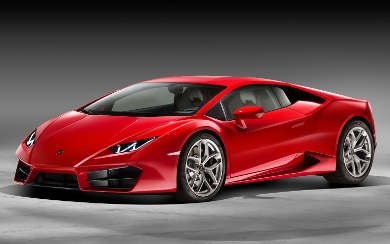
 no había presupuesto entonces
no había presupuesto entonces
